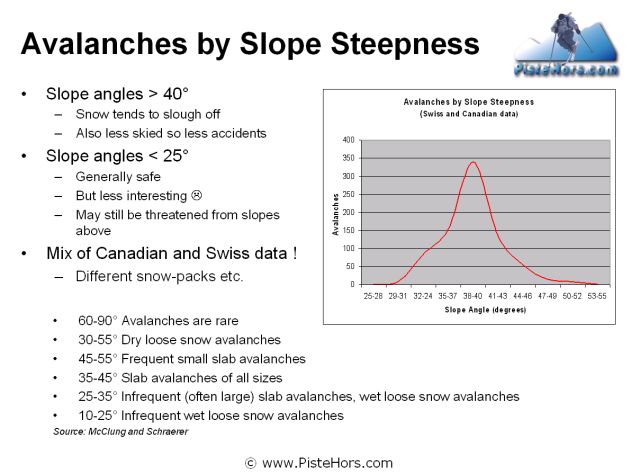While speaking to Henry tonite he mentioned that he has an article in the Telegraph entitled “how to avoid avalanches”.
http://www.telegraph.co.uk/travel/snowandski/6980399/Ski-safety-how-to-avoid-avalanches.html
Henry’s key points are:
i. Learn about slope angles
ii. Look for signs of recent avalanche activity
iii. Watch out for wind-loaded slopes
iv. Study the avalanche bulletin before you go
v. Go one at a time where there is any possibility of danger
vi. Keep your tracks close together
vii. Look out for convexities
viii. Look out for what is below you
viii. Make sure you have the right equipment
ix. Know how your equipment works
x. Be comfortable with the people you are going with
xi. Keep your group size to between three and five people
xii. Keep thinking about what you are doing
Read the article for more details (link above) but before you do think about each point in turn and note (or even post here) your thoughts about what they mean. I was recently reminded about vii. when skiing over the top of a small rollover the slope broke away behind.
There was an interesting article in the ANENA publication Neige and Avalanches this month. The article discussed an avalanche in one of the Isola 2000 couloirs last season. There had been heavy snow accompanied by northerly winds. The top of the couloir had been stripped bare which witnessed the strong winds and the slopes on the other side of the hill were wind loaded. The skiers thought the couloir would be safe as it faced into the wind (although one skier had a “seat of the pants” instinct that the couloir was not safe:
point xiii. trust your or your buddies instincts, if someone has a bad feeling reappraise the route choice
of course in the mountains things are never as simple. The couloir was relative open and the north wind has cross loaded the left bank (again think of what Henry says, the couloir had deeper, better powder in the left side, why?). The slab broke where the couloir made a slight turn and the slope no longer had any support underneath (convex, then cliff) again Henry’s point viii.
More from Henry here: http://www.henrysavalanchetalk.com/

